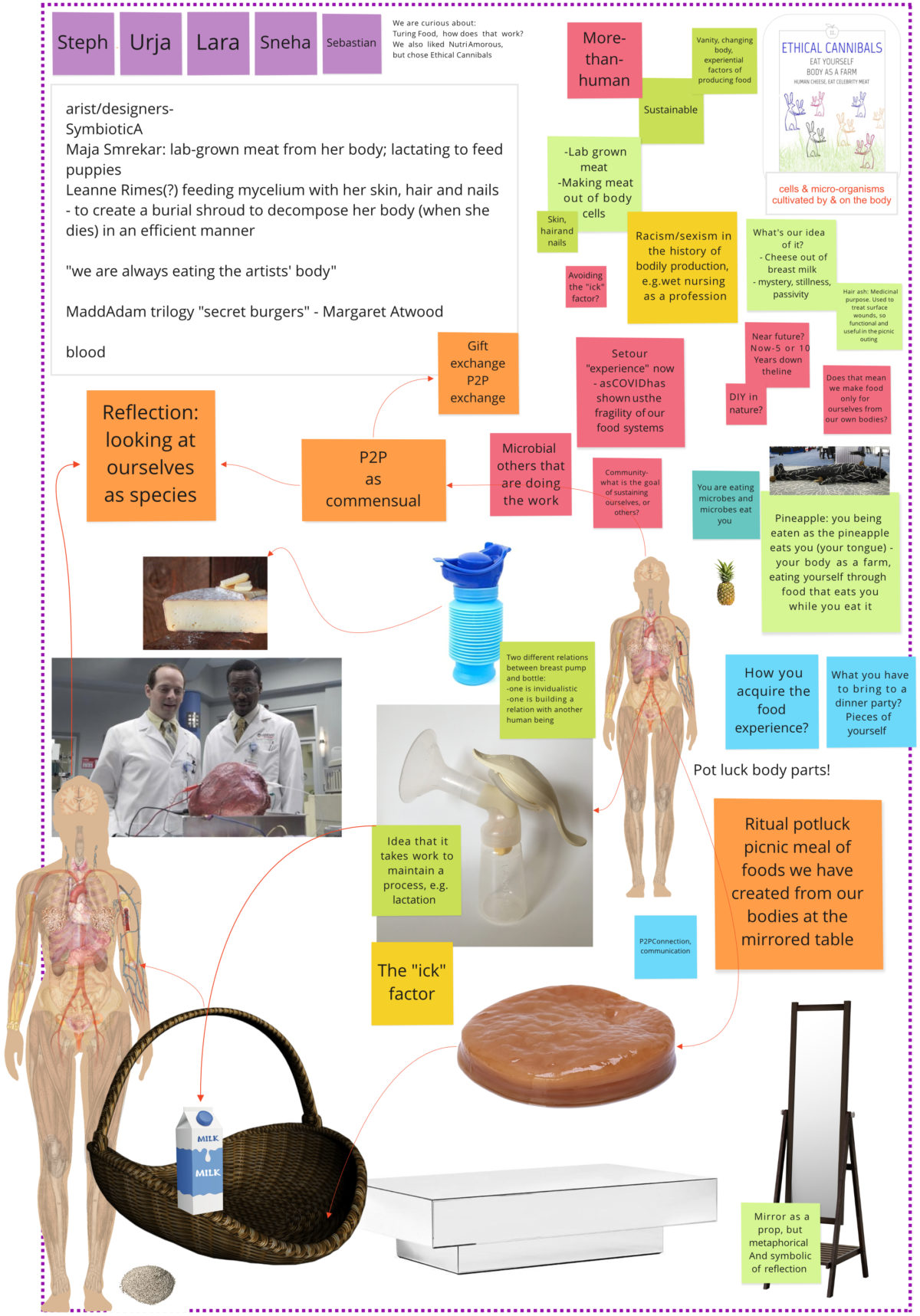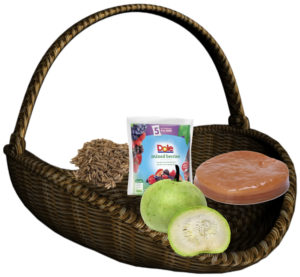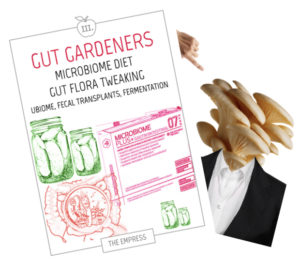Our overall theme is based on the notion of ‘reflection’. The recipe that we have co-created is inspired by the Ethical Cannibals card and develops the idea of the human body as a farm. It provokes us to look at ourselves as human species and reimagine the role that our bodies might play in near-future food systems.
What body parts and resources are we willing to share? And with whom?
For instance, during the COVID-19 pandemic, many people are in lockdown and they feel as if food systems are breaking down. In many places the sudden lack of resources has created panic and resulted in panic-buying.
This made us think: is it time to start using resources that are not only around us but also within us? Shall we start using edible resources cultivated in and on human bodies, such as urine or milk, and use these to sustain ourselves and our communities?
Are we willing to exchange body products beyond our strong-tie community connections?
We envisioned a local peer-to-peer system, designed for mutual gifting and exchange within local communities: people contribute whatever products they have available, including their personal bodily materials, to a large shared ‘pot luck’ meal.
We recognise that some of these shared-body elements are taboo. We wonder what values might need to change to reduce the ‘Ick’ factor, and allow us to share our bodies, our cultures, our rituals to enable sustainable future flourishing?
Further inspired by the Gut Gardeners card, we expanded our view of communities beyond just human beings, aiming to extend the everyday dining experience to be inclusive of different ‘cultures’. Did you know that some foods, or more precisely the micro-organisms within them, eat us the same as we can eat them? Try feeding some bits of your skin or nail clippings to a mushroom, you might grow a fancy – and very personalised – mycelium suit.
How much are we willing to augment our bodies for the sake of a sustainable future flourishing of our communities?
We also want to consider body augmentations. Human bodies are similar but not the same: for example, some people do not lactate. How can we augment their bodies so that every ‘body’ can contribute? And if this is something that we want to do, how do we recognise and design for inclusivity – cultural, ethical and other?
Our recipe is certainly still ‘brewing’. It is not finished, but it carries a call for reflection as its central ingredient (notice the mirror in our recipe collage). As the human species, we need to look ourselves in the eye and carefully reflect on what we – and our bodies – are able and willing to contribute to our communities to help nurture sustainable, regenerative futures.


